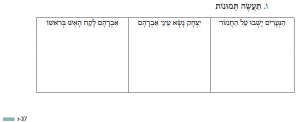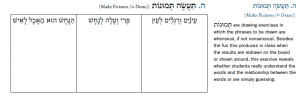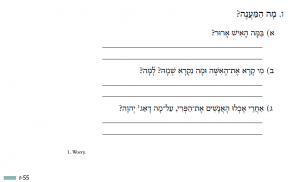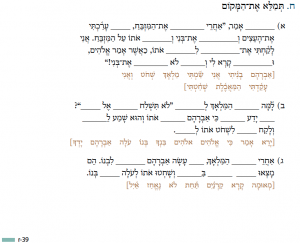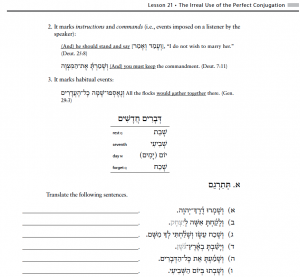A recent question was sent our way: Why do we introduce the Participle so late in our textbook (lesson 42)?
One might be tempted to think that our rationale was simply that not everything can be first. However, there is a specific strategy to presenting the Participle much later than the Perfect and Imperfect forms (lessons 16, 19, 23, and 27). The relatively late introduction is especially noticeable if one compares our grammar with Modern Hebrew grammars, which tend to introduce the Participle prior to the Perfect and Imperfect conjugations. This contrast is significant, since the predicative Participle is thought of as the typical present-tense verb in Modern Hebrew grammar.
By contrast, although the Participle regularly expresses progressive aspect in Biblical, it is neither fully integrated in the verbal “system” of oppositions nor limited to predicatively expressing progressive aspect. Rather, it is properly classified as an adjective (see John A. Cook, “The Participle and Stative in Typological Perspective,” Journal of Northwest Semitic Languages 34/1 [2008]: 1–19), a lexical class that some linguists simply define in the negative as neither noun nor verb (e.g., Mark C. Baker, Lexical Categories: Verbs, Nouns, and Adjectives, Cambridge Studies in Linguistics 102 [Cambridge: Cambridge University Press, 2003]).
As neither nouns nor verbs, adjectives may exhibit varying degrees of features like one or the other: the most productive classes of adjectives (e.g., qāṭol pattern גָּדוֹל) is very noun-like, whereas the stative adjective is very verb-like (i.e., they can be inflected nominally or verbally). The Participle stands between these extremes, participating in the binyanim system but being inflected with nominal agreement features. Most importantly, however, for our placement of the Participle in lesson 42, its participation in the system of verbal oppositions is only partial and emerging in the biblical period of the language. Thus, as a marginal “verbal” conjugation, it makes sense that it is taught only after grammatical components closer to the core.
